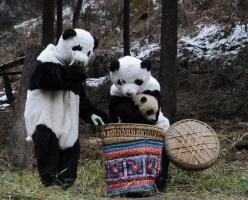Horseracing and Hada Pickup:Tibet Changtang Horse Racing Festival
The 2016 Tibet Changtang Horse Racing Festival started on the morning of the 10th at Gesar Racetrack in Nagqu Town. Farmers from the grasslands in northern Tibet wearing traditional clothes gathered in Nagqu to celebrate the annual grand meeting.
36-year-old Tsering Dorje from Nagqu’s Yoiqagvillage was attending Qiaqing Horse Racing Festival for the eighth time. In previous years he was the champion of the Hada pickup and horse riding shooting on multiple occasions. “Horse racing is our traditional sporting activity and it is especially memorable to be able to race in Nagqu, the hometown of King Gesar”.
The grasslands of northern Tibet are sparsely populated, with Nagqu area having an average population density of less than two people per square kilometer. For a long time the horse has not only been an essential means of everyday transport for farmers, but also an important part of their spiritual lives. During the most beautiful grassland summer farmers gather to display their valiant nature in the Festival which is topray for their "wishes like horse racing”. Whichever family wins will receive good weather for their crops for the coming year. Sangye Dongzhi, associate researcher at Tibet National Institute of Art, said.
During the horse racing festival all farmers wear magnificent Tibetan clothing and takeagricultural and animal products as well as handicrafts unique to their area. They get together to exchange goods, horse ride, sing and dance.
According to Gyaltsen Norbu, general director of the horse racing festival’s opening ceremony, the opening ceremony brought together traditional folk dance representative of “Ling Zhuo” and “Ka’er Xie”. Nearly 2000 farmers participated in the opening ceremony, each wearing all kinds of splendid costumes, including intangible cultural heritage “Azar”, “Amdo” and others. They were all fully intact and help spread the unique local culture.
A farmer from Amdo County, after seeing the song and dance performance, was longing for more. “These songs and dances are part of our daily life and the opening ceremony gave me insight into customs from other areas in northern Tibet,” he said.














